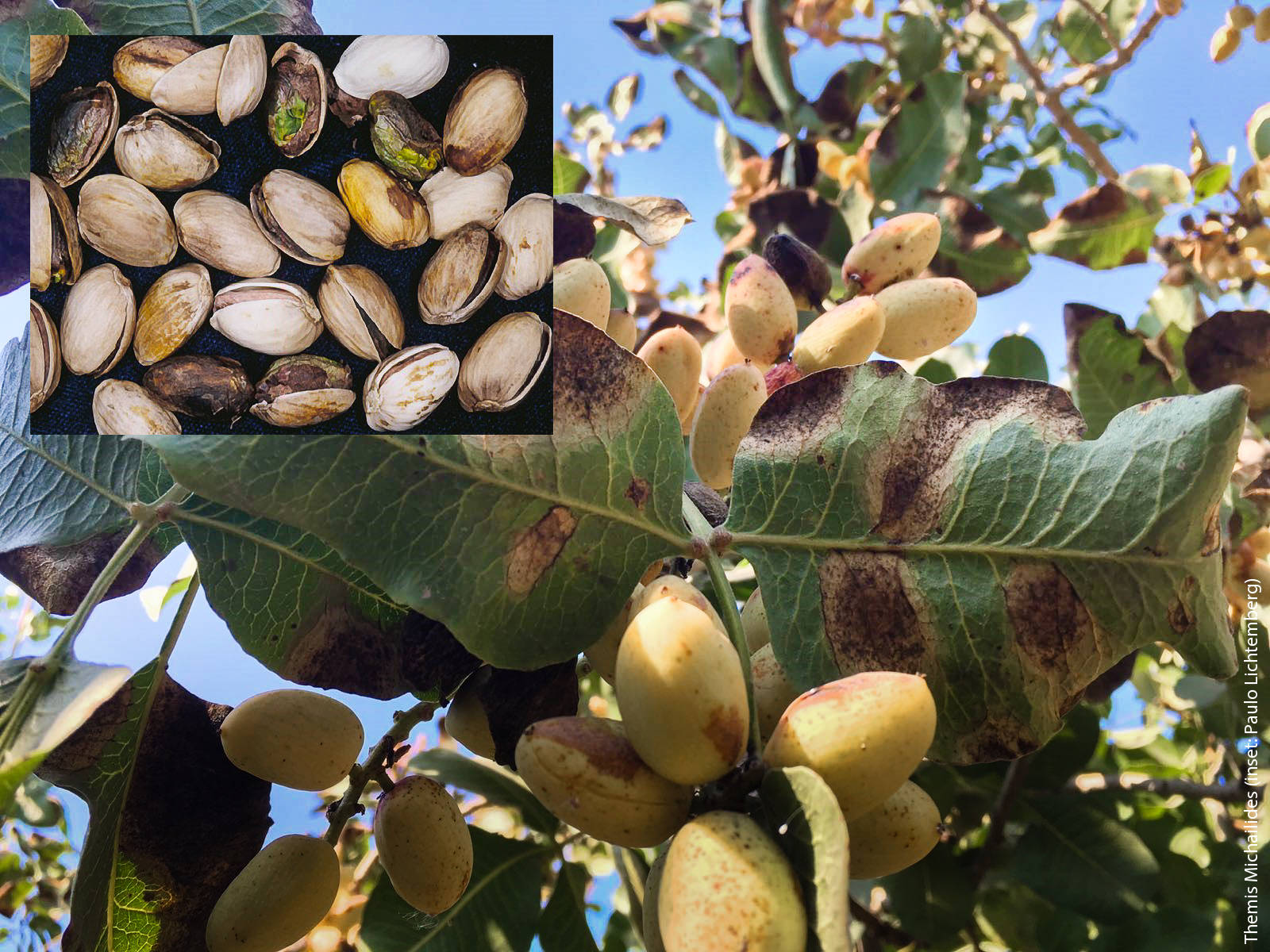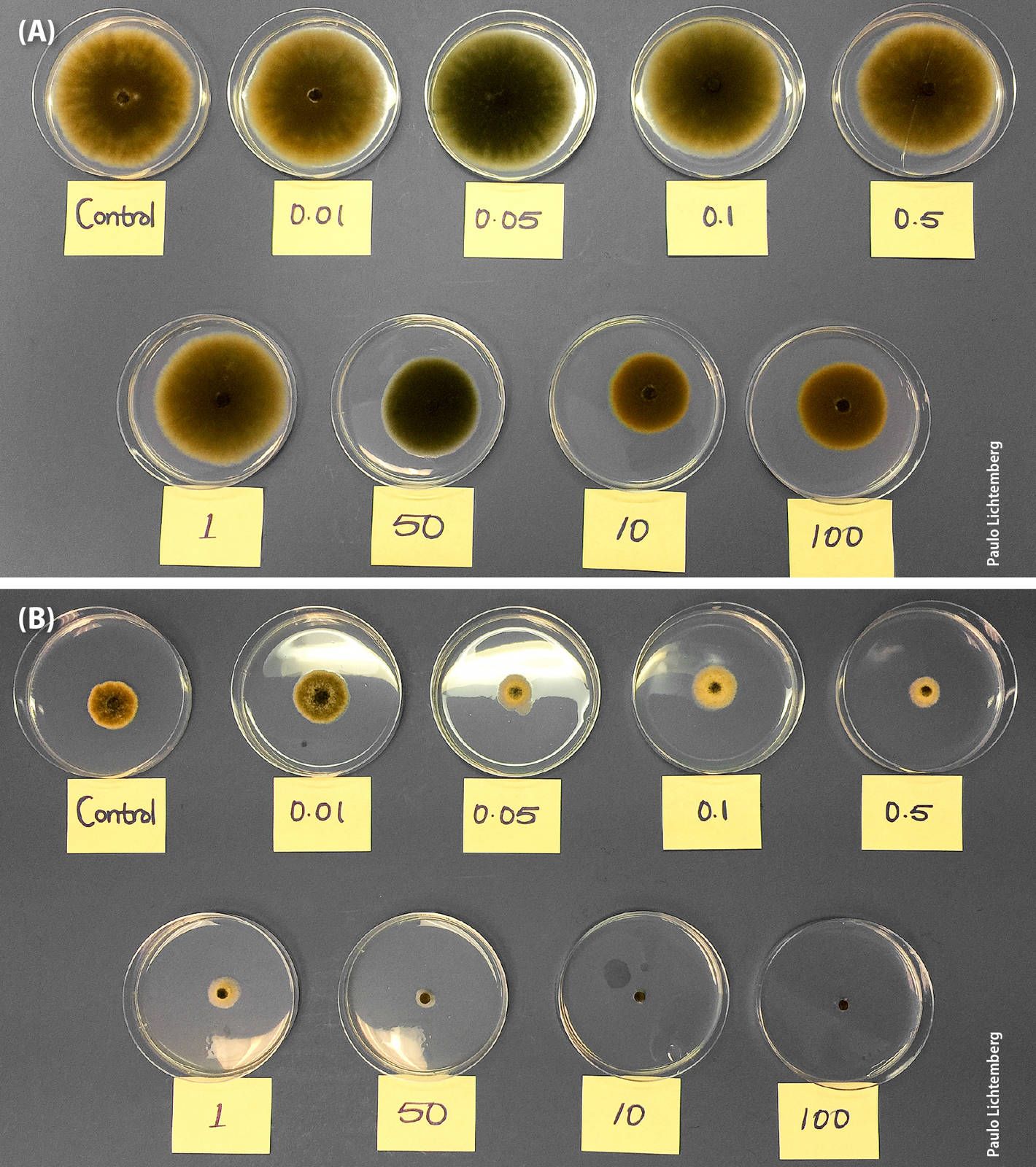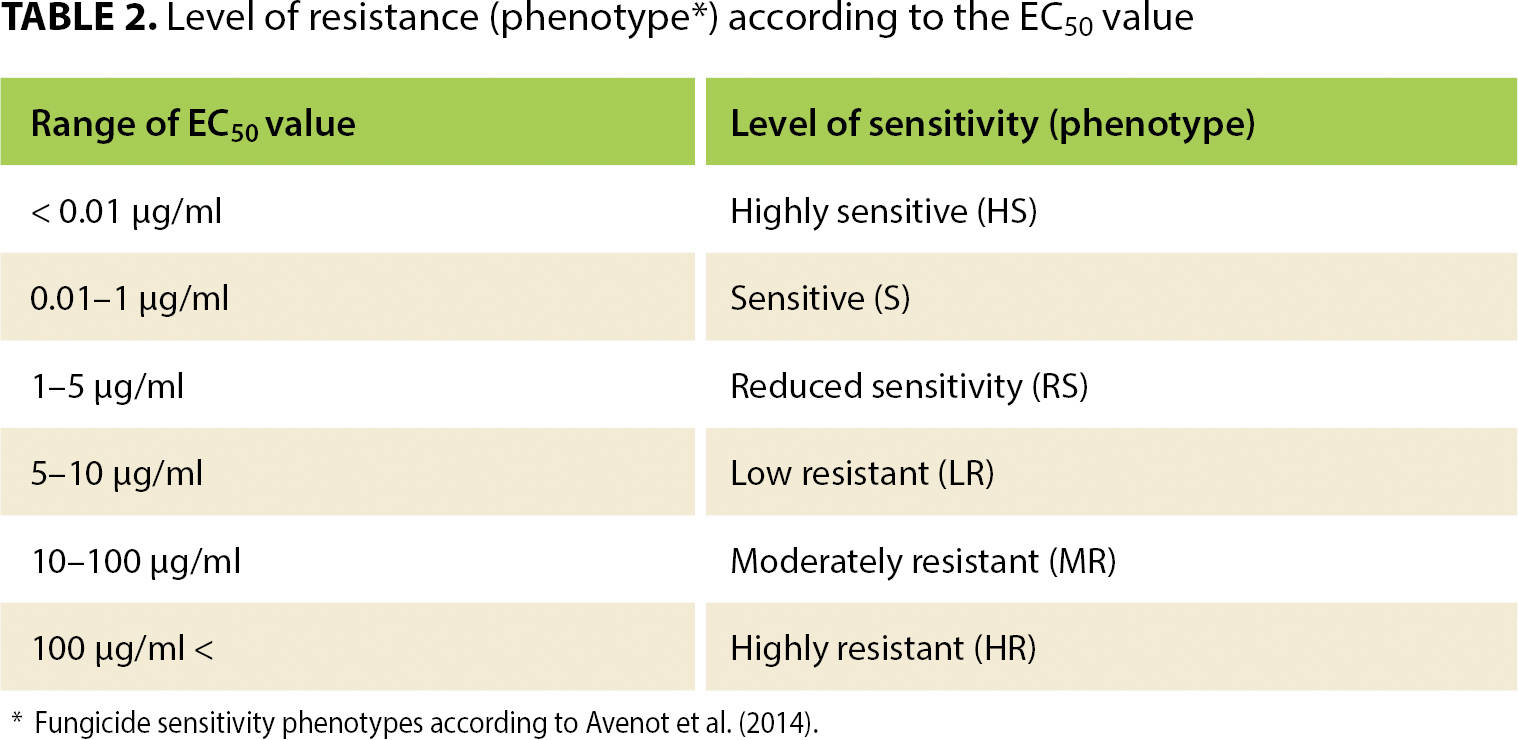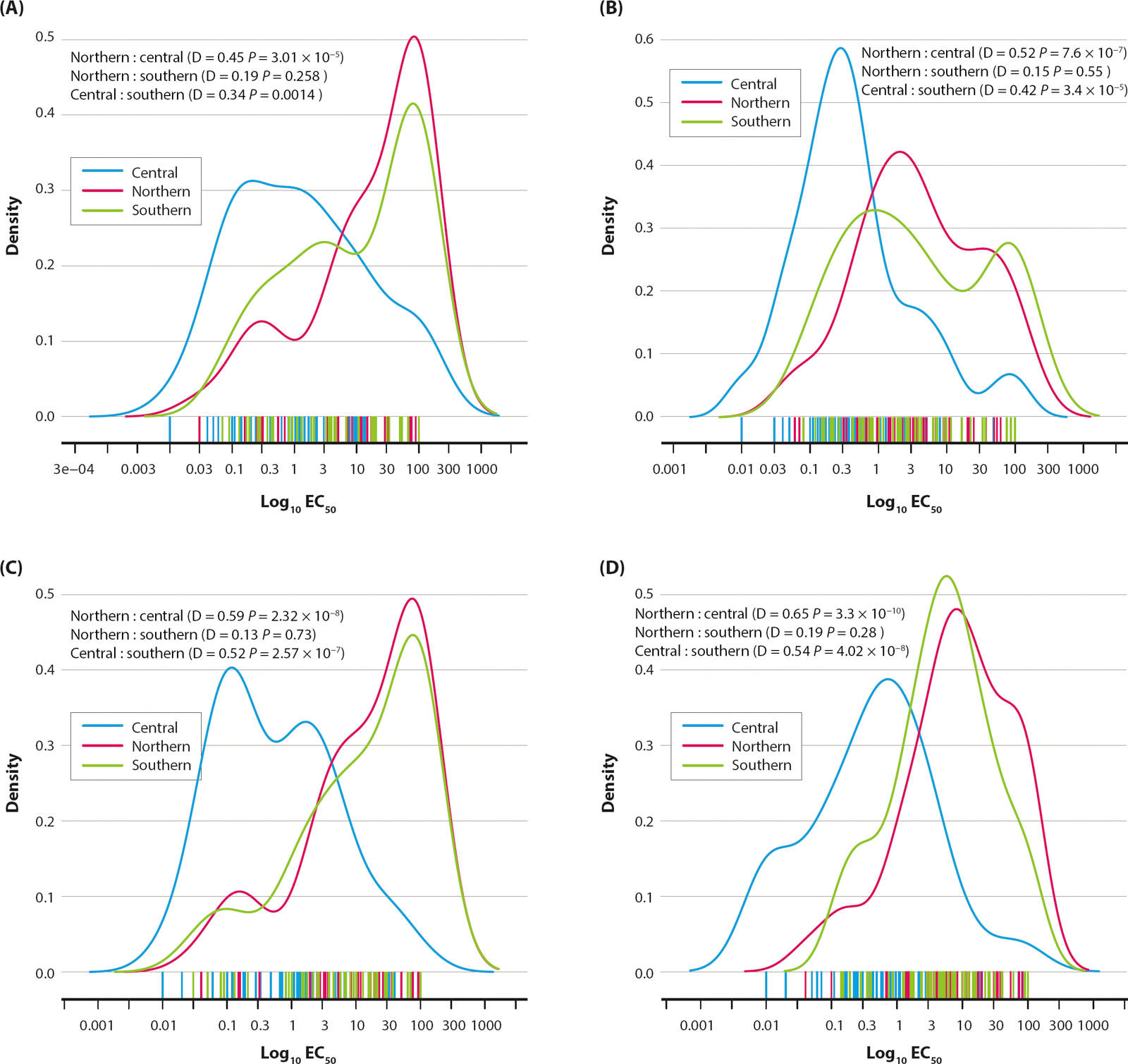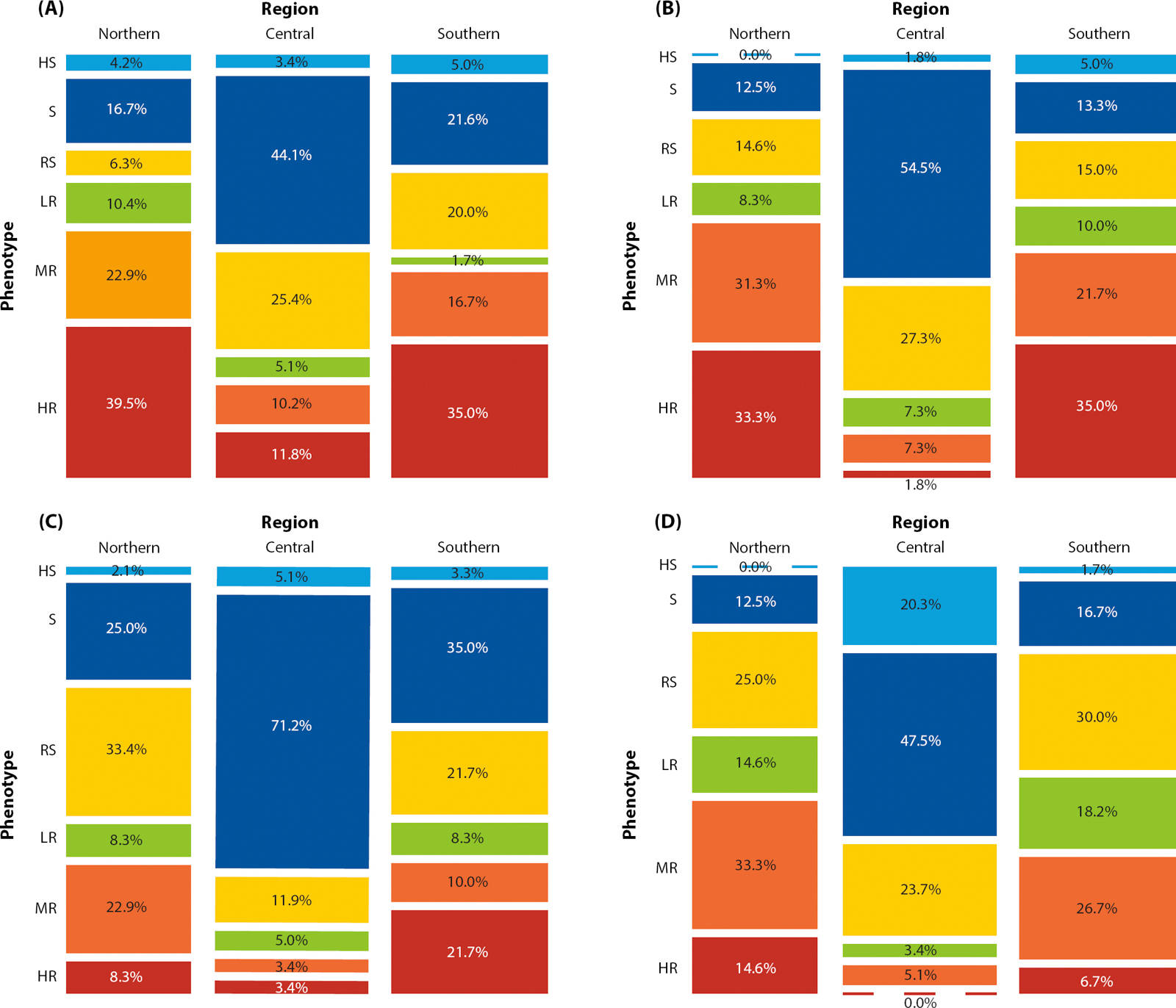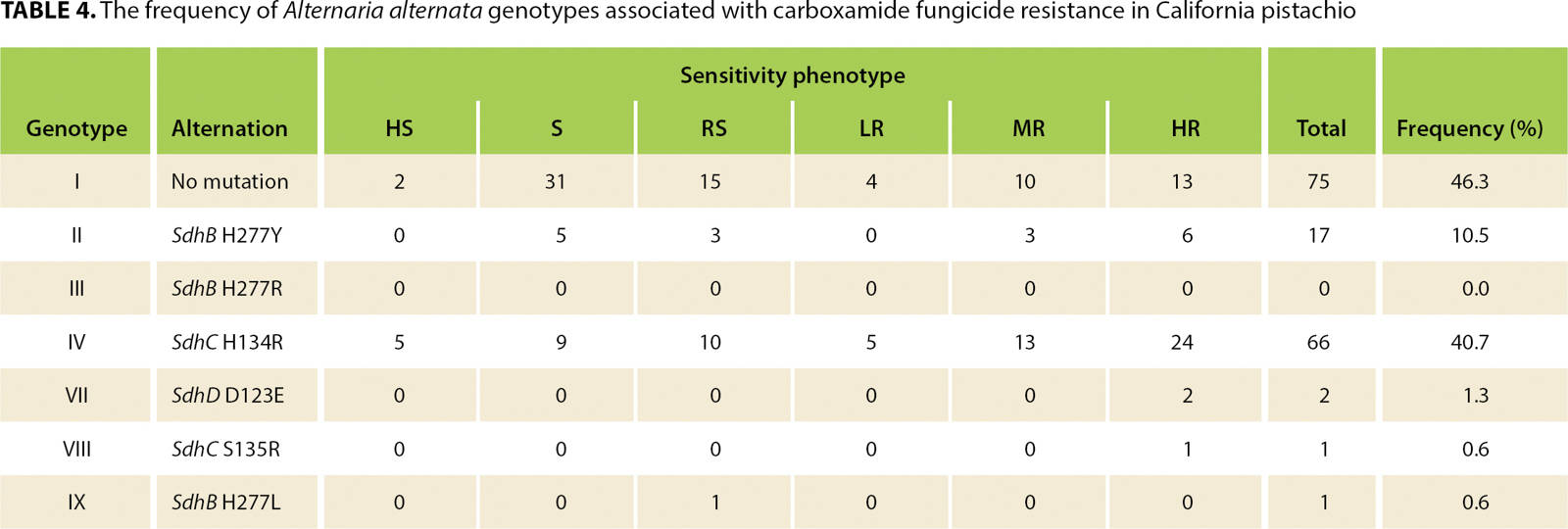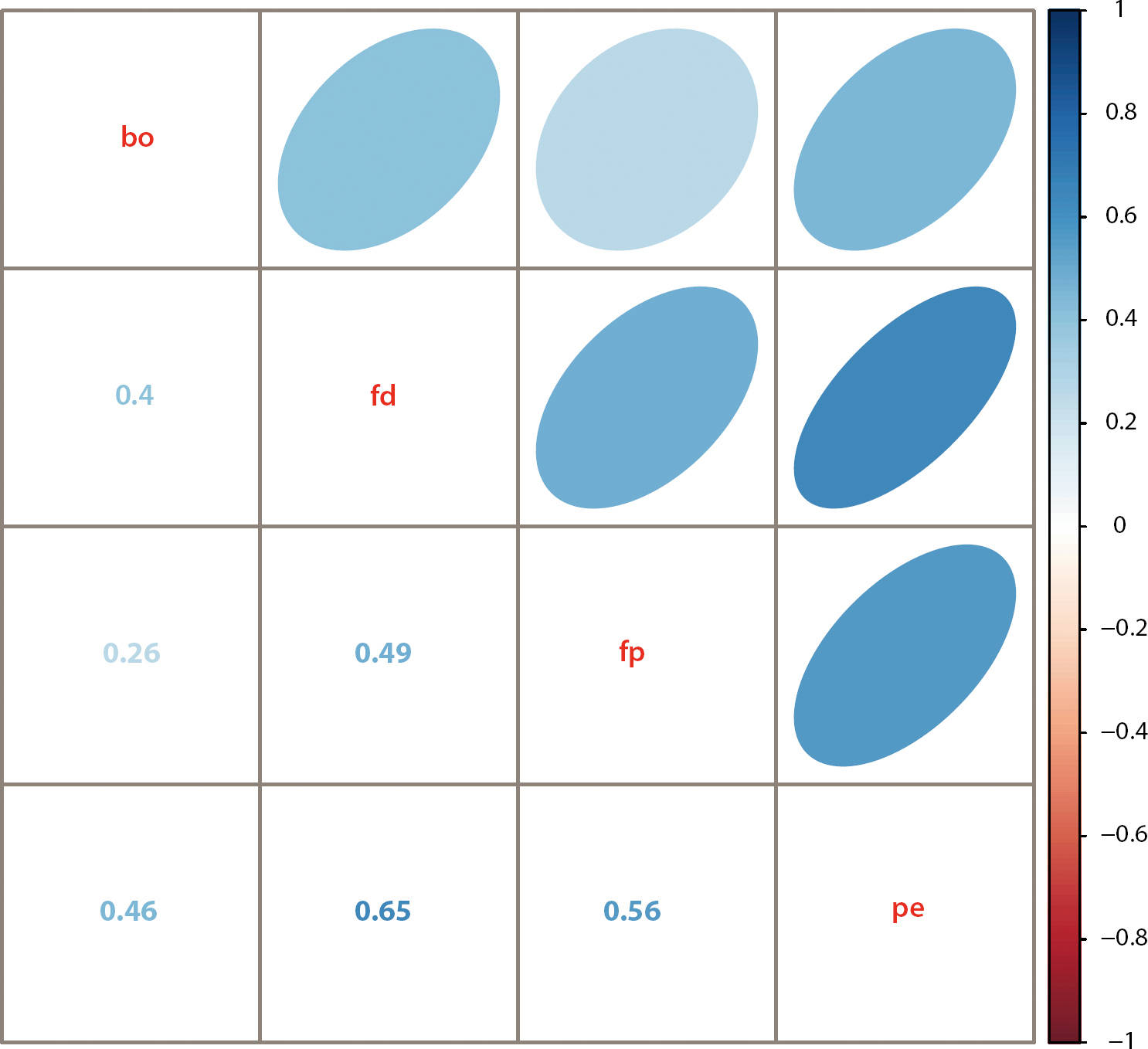All Issues
Survey of the pathogen of Alternaria late blight reveals different levels of carboxamide fungicide resistance in the main pistachio producing regions of California
Publication Information
California Agriculture 72(3):170-178. https://doi.org/10.3733/ca.2018a0022
Published online July 10, 2018
PDF | Citation | Permissions
NALT Keywords
Abstract
Alternaria late blight (ALB), caused mainly by the fungal pathogen Alternaria alternata, is an important pistachio disease that causes severe tree defoliation and fruit shell staining. Its control relies on multiple fungicide sprays, including carboxamide fungicides. In 2015, we surveyed 35 orchards representing nine pistachio producing counties of California to determine the current situation of Alternaria resistance to four widely used carboxamide fungicide active ingredients. This survey showed that isolates collected in the northern (Tehama, Glenn and Colusa counties) and southern (Tulare, Kings and Kern counties) Central Valley presented higher frequencies of carboxamide resistance than isolates collected from orchards in the central region (Fresno, Madera and Merced counties). The number of carboxamide usages in a year is the main factor determining elevated resistance. By extracting the A. alternata DNA and sequencing the carboxamide target genes, we evaluated the prevalence of specific molecular alterations (mutations) associated with carboxamide fungicide resistance. Finally, we identified cross-resistance patterns among different carboxamide fungicides, leading to recommendations about combinations to avoid.
Full text
Alternaria late blight (ALB) is among the most important and destructive diseases in pistachio, representing a major annual concern for commercial growers in California (Avenot and Michailides 2015). ALB is caused by three related species of Alternaria (A. alternata, A. arborenses and A. tenuissima); the most common is A. alternata. Damages from the disease are observed in the foliage (fig. 1) and fruits (fig. 1, inset), resulting in premature defoliation of fruit-bearing and non-bearing shoots, brown or black shell staining, and mold of the kernels, which reduce fruit quality (Michailides et al. 2016). A severe infection can cause losses exceeding $1,000 per acre (T. Michailides, Kearney Agricultural Research and Extension Center, personal communication).
FIG. 1. Lesions on pistachio leaves caused by Alternaria late blight disease and staining of fruits (inset).
ALB control relies on up to three fungicide applications, which must be applied between June and the first week of August (before the appearance of disease leaf lesions) to be effective (Adaskaveg et al. 2017; Michailides et al. 2016). Carboxamides, also known as succinate dehydrogenase inhibitors, or SDHIs, are the primary tool for ALB control in pistachios. Formulations of four carboxamide active ingredients (a.i.) — boscalid, fluxapyroxad, fluopyram and penthiopyrad — are registered in California. Commercially available products include solo formulations as well as mixtures with quinone outside inhibitors and demethylation inhibitors (table 1). All these carboxamide fungicides target a single pathogen site blocking the fungal respiration process, and thus are prone to resistance selection (Oliver and Hewitt 2014; Stammler et al. 2015).
In California, Pristine (a.i. boscalid) was the first modern carboxamide registered to control ALB in pistachio, and resistance of A. alternata was observed just two seasons after its registration in 2003. Since then, resistance has become widespread. In 2005, 12% of A. alternata isolates collected from a commercial orchard in Kern County, where boscalid had been used for two successive years, with two or three sprays per season — showed high levels of resistance (Avenot and Michailides 2007). Five years later, isolates highly resistant to boscalid accounted for 59% of the sampled population in California (Avenot et al. 2014).
The increased number of isolates with high levels of carboxamide resistance may ultimately lead to practical resistance that affects the efficacy of these fungicides. Although Avenot et al. (2012) reported a lack of disease control due to boscalid resistance in several California pistachio orchards, trials at the UC Kearney Agricultural Research and Extension Center in Parlier and at commercial pistachio orchards in California show that carboxamide fungicides, including boscalid, continue to provide consistent disease control (Adaskaveg et al. 2017).
It is difficult to predict when carboxamide field failure may occur. Carboxamide resistance surveys and the regular molecular characterization of the pathogen population can help to provide growers and pest control advisers updated information that may influence fungicide recommendations.
While previous reports have included valuable information concerning the carboxamide resistance of the ALB pathogen in California pistachio (Avenot et al. 2014), information on regional variations in resistance has not been published. Regional-level information on resistance can help to guide growers' carboxamide application decisions.
Our study evaluated A. alternata resistance by region to the four carboxamide fungicides registered for pistachio and investigated the molecular basis of resistance. We focused on isolates from the three regions that account for 99.3% of California pistachio production (ACP 2017). We defined the northern region as Colusa, Glenn and Tehama counties, the central region as Fresno, Madera and Merced counties, and the southern region as Kern, Kings and Tulare counties (fig. 2).
FIG. 2. A California map showing the counties and orchards (yellow dots) where isolates were collected. Tehama, Colusa and Glenn counties (pink); Merced, Madera and Fresno counties (blue); and Tulare, Kings and Kern counties (green).
Fungal isolates used in this study
From May through July 2015, we collected a total of 167 A. alternata isolates from 35 commercial pistachio orchards in the three regions (fig. 2). Carboxamides have been used for many years in all orchards sampled. The mean number of carboxamide applications per year for each region is summarized in table 3. We tested 48 isolates from the northern region, 59 from the central region and 60 from the southern region. Isolates were recovered from asymptomatic leaves using the overnight freezing incubation technique (ONFIT), followed by a purification to select a colony single conidia (fig. 3).
Testing pathogen sensitivity to carboxamide fungicides
The sensitivity of A. alternata to each carboxamide a.i. was determined as the concentration of the fungicide that inhibits fungal growth by 50%, known as the EC50 value (fig. 4). The EC50 value is the standard measure of fungal sensitivity to fungicides. To obtain the sensitivity values, fungicide stock solutions were prepared at a concentration of 10 grams a.i. per liter. The fungicides used were as follows: technical grade boscalid (a.i. 99%, BASF, The Chemical Company), fluopyram (a.i. 99.13%, Bayer CropScience) and penthiopyrad (a.i. 99.5%, DuPont Company), each diluted in acetone; and the commercial product of fluxapyroxad (Sercadis 300 SC, BASF, The Chemical Company) diluted in sterile deionized water. Each stock solution was diluted in autoclaved yeast-bacto-agar media at final concentrations of 0 (control), 0.01, 0.03, 0.12, 0.48, 1.92, 7.68, 30.72 and 122.88 µg/ml. For each tested isolate, a 5-mm mycelial plug was transferred to a fresh plate containing yeast-bacto-agar medium, amended with one of the above fungicide concentrations. Plates were incubated for a week before measuring colony diameter. Each isolate EC50 value corresponds to the dosage that inhibits the colony by 50% relative to the growth at the 0 dose (without fungicide). Linear regression functions were used to determine these values.
FIG. 4. Alternaria alternata fungicide sensitivity assay showing the mycelial inhibition of a resistant (A) and sensitive (B) isolate.
For the purposes of analysis, we assigned six sensitivity categories, or phenotypes — from highly resistant to highly sensitive — to ranges of EC50 values (table 2) (Avenot et al. 2014).
Genetic mutations associated with carboxamide resistance
DNA mutations in fungal pathogens are one source of resistance to fungicides (Oliver and Hewitt 2014). To identify genetic mutations associated with carboxamide resistance, we used a molecular approach, gene sequencing, to test the presence of different point mutations at the AaSdhB, C and D genes. In total, six different mutations were studied, the H277Y/L/R at the AaSdhB gene, the H134R and S135R at the AaSdhC gene, and the D123E at the AaSdhD gene. The absence or presence of different mutations determines which genotype the A. alternata isolate belongs to.
Statistical analysis
The EC50 values were obtained by first making the logarithm (log10) transformation of the fungicide concentrations and then performing linear regressions of the colony inhibition values by the log10 concentrations of fungicides. The EC50 values were calculated from the significant (P < 0.05) linear regression equations obtained for each isolate. Changes in sensitivity density curves were analyzed with the two-sample Kolmogorov-Smirnov test by comparing the cumulative frequency distribution of two datasets at a time. The arithmetic means of EC50 values for the regions were calculated separately. Significant differences were verified with the Welch two-sample t-test, considered significant at P < 0.05. Pearson correlation analysis was used to determine cross-resistance among the four tested carboxamides. The statistical software R (version 3.4.0) was used for data analysis and graphical representation.
A. alternata resistance to carboxamide in California
The A. alternata resistance survey to carboxamides fungicides showed different levels of sensitivity among and within the California regions where the isolates were collected. Our data on sensitivity density distribution, mean sensitivity value (EC50 value), and the frequency of isolate phenotypes demonstrate that the northern and southern pistachio producing regions possess a greater number of isolates with higher resistance to carboxamides than the central region. The results for A. alternata sensitivity density distribution show similar curves for isolates collected from the northern and southern regions when testing boscalid (fig. 5A; P = 0.258), fluopyram (fig. 5B; P = 0.55), fluxapyroxad (fig. 5C; P = 0.73) and penthiopyrad (fig. 5D; P = 0.28). Clearly, the sensitivity density distribution curves for the northern and southern regions were shifted toward resistance in comparison with the central region. Significant differences between central and northern regions were observed for boscalid (fig. 5A; P = 3.0 × 10−5), fluopyram (fig. 5B; P = 7.6 × 10−7), fluxapyroxad (fig. 5C; P = 2.3 × 10−8) and penthiopyrad (fig. 5D; P = 3.3 × 10−10). Similarly, the central region differed from the southern region for boscalid (fig. 5A; P = 0.0014), fluopyram (fig. 5B; P = 3.4 × 10−5), fluxapyroxad (fig. 5C; P = 2.5 × 10−7) and penthiopyrad (fig. 5D; P = 4.0 × 10−8).
FIG. 5. Alternaria alternata sensitivity density distribution for carboxamides fungicides (A) boscalid, (B) fluopyram, (C) fluxapyroxad and (D) penthiopyrad on the three major pistachio producing areas of California. EC50 values were log transformed prior to plotting. The figure shows that for all carboxamide fungicide used in this study, A. alternata isolates from the northern (Tehama, Glenn and Colusa counties) and southern (Kern, Kings and Tulare counties) Central Valley counties are shifted significantly toward resistance in comparison to the central counties (Fresno, Madera and Merced).
The mean EC50 values obtained for different carboxamides corroborate the information above, where the sensitivity values obtained for the central region (14.62, 5.3, 5.14 and 3.89 µg/ml) were statistically (P < 0.05) lower than the values encountered from the northern (48.76, 18.68, 46.02 and 26.73 µg/ml) and southern (41.16, 27.7, 42.92 and 16.46 µg/ml) regions for boscalid, fluopyram, fluxapyroxad and penthiopyrad, respectively (table 3).
TABLE 3. Comparison of the pistachio producing regions of California regarding the mean EC50 value and number of carboxamide (SDHI) spray application per season
The frequency of sensitivity phenotypes within regions for the tested fungicides showed two major trends. First, isolates exhibiting moderately resistant (MR) and highly resistant (HR) phenotypes tend to be more prevalent in the northern and southern regions (fig. 6). Second, highly sensitive (HS) and sensitive (S) phenotypes together were dominant within the central population. Furthermore, a detailed phenotype frequency analysis revealed that the two most resistant phenotypes (MR and HR) from the north accounted for higher frequencies of isolates tested with boscalid (fig. 6A; 62.4%), fluxapyroxad (fig. 6B; 64.6%) and penthiopyrad (fig. 6D; 47.9%), but not for fluopyram (fig. 6C; 31.2%), where the two intermediate sensitivity phenotypes, reduced sensitivity (RS) and low resistant (LR), were present in 41.7% of isolates (fig. 6C). In the south, the same analysis showed that MR and HR phenotypes accounted for higher frequencies when tested for boscalid (fig. 6A; 51.7%) and fluxapyroxad (fig. 6B; 64.6%); but for penthiopyrad, higher frequencies were observed for the RS and LR phenotypes together (fig. 6D; 48.2%). The phenotype frequency for fluopyram in the southern region showed a balanced distribution among the two most sensitive (HS and S; fig. 6C; 38.3%), the two intermediate phenotypes (RS and LR; fig. 6C; 30%), and the two most resistant phenotypes (MR and HR; fig. 6C; 31.7%).
FIG. 6. Frequency of Alternaria alternata sensitivity phenotypes for carboxamide fungicides (A) boscalid, (B) fluxapyroxad, (C) fluopyram and (D) penthiopyrad on the three major pistachio producing areas of California. HR = highly resistant, MR = moderately resistant, LR = low resistant, RS = reduced sensitivity, S = sensitive and HS = high sensitivity.
Links between carboxamide treatment and resistance
In the recent past, A. alternata resistance build-up to carboxamide fungicides was observed in a short period in pistachio and peach orchards where boscalid had been sprayed twice or three times per year (Avenot and Michailides 2007; Yang et al. 2015). These two examples demonstrated that recurrent use of carboxamides is the most important factor causing the ALB resistance build-up within a population. In pistachio orchards surveyed for this study, in 2015, carboxamide fungicides were sprayed once or twice in the northern orchards, and from zero to three times in the southern orchards — in both cases, more than in the central region (table 3).
Previous research has established the importance of weather conditions in the spread of Alternaria species. Most severe epidemics are associated with maximum daily temperatures of 28°C to 32°C, combined with wet conditions provided by rain, irrigation or dew (Rotem 1994). In California, these favorable conditions occur from late summer through early fall because of relatively long periods of dew and high relative humidity in August and September compared with spring and summer (Michailides et al. 2016). Weather conditions more favorable to ALB disease contribute to growers applying fungicides more times each summer in the northern and southern counties than in the central counties (CIMIS 2017). In turn, more fungicide sprays result in more pressure under the target fungi population, increasing the selection for resistant isolates.
Weather data for the studied locations in 2013 to 2015 showed that climate conditions in the northern and southern counties were more conducive to ALB disease (fostering more severe cases of the disease and more disease cycles per season) than were conditions in the central counties.
Another factor: In the northern counties, weather conditions are conducive to another important fungal disease of pistachios, Botryosphaeria panicle and shoot blight (caused by Botryosphaeria dothidea, commonly known as BOT, and treated with the same fungicides registered for ALB). Morgan et al. (2009) reports that some growers in this region have used as many as seven fungicide applications annually. The increased number of fungicide sprays needed in the northern counties to control BOT increases the exposure of Alternaria species to carboxamides, even when the pathogens are latent — that is, not actively growing and causing damage to the pistachio tissue.
Genetic mutations of surveyed ALB isolates
In California, 46.3% of the A. alternata population belongs to the genotype I, composed of isolates without any described mutation associated with carboxamide resistance, meaning that they are sensitive to carboxamide fungicides (table 4). Of the isolates carrying mutations associated with carboxamide resistance, the genotype IV (H134R) was most often observed, with 40.7% of the total surveyed population, followed by genotype II (H277Y), accounting for 10.5% (table 4) of the total population. With very low frequencies, the isolate mutants D123E (genotype VII), S135R (genotype VIII) and H277L (genotype IX) accounted for 1.3, 0.6 and 0.6% of the population, respectively (table 4). The genotype III (H277R), reported in past surveys, was not found in our study.
TABLE 4. The frequency of Alternaria alternata genotypes associated with carboxamide fungicide resistance in California pistachio
The two most observed mutations conferring carboxamide resistance in our study — H134R and H277Y — were also those found most frequently within the A. alternata populations of peach in South Carolina, where H134R and H277Y genotypes accounted for, respectively, 49.2% and 19% of the total studied isolates (Yang et al. 2015). However, the frequencies of the H134R and H277Y mutations we observed in A. alternata differed from those reported from a survey in California pistachio orchards performed by Avenot et al. (2014), which found higher frequencies of H277Y than H134R on isolates collected in 2010.
We believe these differences can be explained by two factors: (a) the use of different carboxamide a.i. selecting for different mutations and (b) the higher fitness or adaptability of H134R in comparison with H277Y when competing against isolates without any mutations, the sensitive isolates.
The evidence for the first hypothesis comes from the early 2000s. At that time, the fungicide Pristine (premixture of a.i. boscalid plus pyraclostrobin) was the most commonly used carboxamide to control ALB disease, and selected mostly for the H277Y genotype followed by the H134R (Avenot et al. 2014). Years later, with the registration for pistachio of Fontelis (a.i. penthiopyrad), Merivon (containing the a.i. fluxapyroxad) and Luna package (containing the a.i. fluopyram), the use of Pristine decreased, changing the mutation frequencies of A. alternata isolates within the California population to H134R (40.7%) and H277Y (10.5%) (table 4).
Stammler et al. (2015) have described how mutation type is related to the use of specific carboxamides. To corroborate this information, Sierotzki et al. (2010) described the major selection of H277Y mutation on A. alternata, by the solo use of boscalid, and the selection for H134R when using the a.i. isopyrazam and the boscalid/pyraclostrobin mixture. In California, the use of Fontelis, Merivon and Luna products (a.i. penthiopyrad, fluxapyroxad and fluopyram, respectively), may also have contributed to modify the genotype composition of the A. alternata population, but the extent to which genotype modifications occur in response to the use of the a.i. products has yet to be studied. Recent, preliminary studies in two commercial orchards in Tulare County, where fluopyram (a.i. of Luna products) was sprayed twice each season for the last 2 years, showed the persistence of ALB pathogens carrying the H134R mutation (P. Lichtemberg, unpublished data).
Our second hypothesis, regarding the relative fitness of the H134R genotype over H277Y when mixed with sensitive genotypes, is supported by Fan et al. (2015). Their study of peach isolates of A. alternata carrying the H277Y and H134R mutations found that the mutant genotypes were not out-competed by sensitive isolates over the course of five successive transfers in the absence of carboxamide, and their frequencies stabilized at about 60% (H134R) and 30% (H277Y) from an initial 50%–50% mixture. In pistachio populations of A. alternata, studies of competition between resistant mutants and sensitive isolates have not been performed, but observations on spore production and mycelial growth suggest advantages of H134R over H277Y (P. Lichtemberg, personal observation).
Carboxamide cross-resistance
Carboxamide cross-resistance — when an isolate resistant to one fungicide is found to also be resistant to another fungicide belonging to the same chemical group — was tested for the whole study population (n = 167) and revealed weak to moderate resistance relationships among the four carboxamides (fig. 7). Resistance to boscalid showed a moderate relationship to resistance to fluxapyroxad (r = 0.40) and penthiopyrad (r = 0.46), and a weak relationship to resistance to fluopyram (r = 0.26). Among the studied interactions, resistance to both fluxapyroxad and penthiopyrad revealed the highest positive correlation coefficient and intensity (r = 0.65; see ellipse shape, fig. 7). Additionally, resistance to fluopyram was moderately correlated to resistance to penthiopyrad (r = 0.56) and fluxapyroxad (r = 0.49; fig.7).
FIG. 7. Cross-resistance levels among carboxamide fungicides tested on Alternaria alternata isolates collected in pistachio producing regions of California. Ellipses show correlation intensity (more elliptical indicates a stronger relationship between two fungicides) and the colors represent the coefficient of correlation, r (see scale at right of chart: 0 indicates no relationship, 0.30 a weak positive correlation, 0.5 a moderate correlation, and 0.70 a strong correlation). Abbreviations: bo = boscalid, the active ingredient of Pristine; fd = fluxapyroxad, the active ingredient of Merivon; fp = fluopyram, the active ingredient of Luna products; and pe = penthiopyrad, the active ingredient of Fontelis.
These results suggest that isolates resistant to boscalid have a higher risk of resistance selection from treatment with fungicides containing penthiopyrad and fluxapyroxad, than from treatment with fluopyram. This observation strengthens the recommendation made by Avenot et al. (2014) that Fontelis (a.i. penthiopyrad) and Merivon (a.i. fluxapyroxad) should be avoided or carefully used in areas with a history of Pristine usage (containing the a.i. boscalid). The relatively high correlation of fluopyram with penthiopyrad and fluxapyroxad may be associated with the high frequency of isolates carrying the H134R mutation in the California population
The cross-resistance patterns for carboxamides are complex and are related to different levels of resistance conferred by different mutations, and the role of each mutant genotype within the population (Olaya et al. 2016; Sierotzki et al. 2010; Stammler et al. 2015). Regardless of the role of any particular genotype in the development of cross-resistance, it is reasonable to conclude that resistance to different carboxamides may be always associated with the application of carboxamides, and that overuse of these products should be avoided.
Final remarks and recommendations
In this study, we reported that A. alternata sensitivity to carboxamide fungicides in the northern and southern pistachio producing regions of California was shifted toward resistance in comparison to the central region. We also observed that fluopyram (one a.i. component of Luna fungicides) is the carboxamide a.i. causing the least selection of isolates with altered sensitivity, meaning that fluopyram presents the highest levels of activity against ALB in pistachio. The sensitivity results obtained with fluopyram in our studies in vitro reflect the results obtained in recent field trials performed at Kearney Agricultural Research and Extension Center (Michailides et al. 2017). The other registered carboxamides such as Merivon (fluoxapyroxad), Pristine (boscalid) and Fontelis (penthiopyrad) still provide excellent and consistent control — despite the elevated pathogen resistance we observed — and are important components of ALB management in California pistachio.
To preserve the efficacy of these fungicides as long as possible, growers should consider the usage of multi-site activity inorganics and chloronitrile fungicides (belonging to Fungicide Resistance Action Committee — FRAC — codes M1, M2 and M5) as part of a seasonal ALB control program. Multi-site activity inorganics and chloronitriles are less prone to develop resistance because they act on multiple pathogen cell functions. As a result, a combination of molecular alterations (difficult to find in the nature) in the pathogen would be necessary for the development of resistance. A drawback of chloronitrile fungicides in pistachio is the potential for phytotoxicity problems (which may damage fruit and leaves) when sprayed early in the season. For this reason, chloronitrile fungicides should be applied as the second or third spray for ALB control. Multi-site activity inorganics are not known to have this problem in pistachio.
Additionally, we recommend cultural practices that increase air movement and reduce humidity inside the orchards such as tree hedging and drip-irrigation (Michailides et al. 1995 and 2016).
Currently, at the Kearney Agricultural Research and Extension Center, we are performing several studies designed to inform anti-resistance strategies for use by growers. This work includes (a) testing the persistence of various genotypes (resistant-mutants and sensitives) within the A. alternata population, under laboratory and field conditions, to understand their fitness (adaptability) on environment without carboxamide pressure, (b) evaluating multiple spray programs and cultural practices to slow the resistance build-up to carboxamides and affecting fruit quality (c) in vitro testing of carboxamides not yet registered for pistachio that may become treatment options for growers in the future and (d) developing molecular methods to identify carboxamide-resistant-mutant isolates while still latent, in order to inform pest control advisers and growers about the risks associated with carboxamide usage for each season.
By continuing to study the components of fungicide resistance in A. alternata, we can assist in the delay of the fungicide resistance and increase the usefulness of the chemical arsenal available to the pistachio growers of California.



